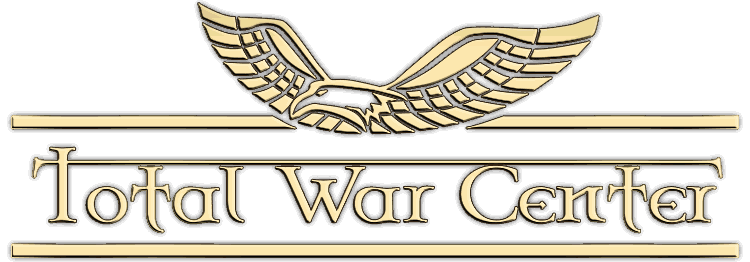-
February 06, 2020, 02:50 PM
#1
 Faction Overview: The Vikings
Faction Overview: The Vikings
Anno Domini:
The Vikings

Vikings were Scandinavians, who from the late 8th to late 11th centuries, raided and traded from their Northern European homelands across wide areas of Europe, and explored westwards to Iceland, Greenland, and Vinland. The term is also commonly extended in modern English and other vernaculars to include the inhabitants of Norse home communities during what has become known as the Viking Age, 793–1066 AD. This period of Nordic military, mercantile and demographic expansion constitutes an important element in the early medieval history of Scandinavia, Estonia, the British Isles, France, Kievan Rus' and Sicily.
Facilitated by advanced sailing and navigational skills, and characterised by the longship, Viking activities at times also extended into the Mediterranean littoral, North Africa, and the Middle East. Following extended phases of (primarily sea- or river-borne) exploration, expansion and settlement, Viking (Norse) communities and governments were established in diverse areas of north-western Europe, Belarus, Ukraine and European Russia, the North Atlantic islands and as far as the north-eastern coast of North America. This period of expansion witnessed the wider dissemination of Norse culture, while simultaneously introducing strong foreign cultural influences into Scandinavia itself, with profound developmental implications in both directions.
The period from the earliest recorded raids in the 790s until the Norman conquest of England in 1066 is commonly known as the Viking Age of Scandinavian history. Vikings used the Norwegian Sea and Baltic Sea for sea routes to the south. The Normans were descended from Vikings who were given feudal overlordship of areas in northern France—the Duchy of Normandy—in the 10th century. In that respect, descendants of the Vikings continued to have an influence in northern Europe. Likewise, King Harold Godwinson, the last Anglo-Saxon king of England, had Danish ancestors. Two Vikings even ascended to the throne of England, with Sweyn Forkbeard claiming the English throne in 1013–1014 and his son Cnut the Great becoming king of England 1016–1035.
Geographically, a Viking Age may be assigned to not only Scandinavian lands (modern Denmark, Norway and Sweden), but also territories under North Germanic dominance, mainly the Danelaw, including Scandinavian York, the administrative centre of the remains of the Kingdom of Northumbria, parts of Mercia, and East Anglia. Viking navigators opened the road to new lands to the north, west and east, resulting in the foundation of independent settlements in the Shetland, Orkney, and Faroe Islands; Iceland; Greenland; and L'Anse aux Meadows, a short-lived settlement in Newfoundland, circa 1000. The Greenland settlement was established around 980, during the Medieval Warm Period, and its demise by the mid-15th century may have been partly due to climate change. The Viking Rurik dynasty took control of territories in Slavic and Finno-Ugric-dominated areas of Eastern Europe; they annexed Kiev in 882 to serve as the capital of the Kievan Rus'.
As early as 839, when Swedish emissaries are first known to have visited Byzantium, Scandinavians served as mercenaries in the service of the Byzantine Empire. In the late 10th century, a new unit of the imperial bodyguard formed. Traditionally containing large numbers of Scandinavians, it was known as the Varangian Guard. The word Varangian may have originated in Old Norse, but in Slavic and Greek it could refer either to Scandinavians or Franks. The most eminent Scandinavian to serve in the Varangian Guard was Harald Hardrada, who subsequently established himself as king of Norway (1047–1066).
There is archaeological evidence that Vikings reached Baghdad, the centre of the Islamic Empire. The Norse regularly plied the Volga with their trade goods: furs, tusks, seal fat for boat sealant, and slaves. Important trading ports during the period include Birka, Hedeby, Kaupang, Jorvik, Staraya Ladoga, Novgorod, and Kiev.
Generally speaking, the Norwegians expanded to the north and west to places such as Ireland, Scotland, Iceland, and Greenland; the Danes to England and France, settling in the Danelaw (northern/eastern England) and Normandy; and the Swedes to the east, founding Kievan Rus'. According to the Icelandic sagas, many Norwegian Vikings also went to eastern Europe.
In the Viking Age, the present day nations of Norway, Sweden and Denmark did not exist, but were largely homogeneous and similar in culture and language, although somewhat distinct geographically. The names of Scandinavian kings are reliably known for only the later part of the Viking Age. After the end of the Viking Age the separate kingdoms gradually acquired distinct identities as nations, which went hand-in-hand with their Christianisation. Thus the end of the Viking Age for the Scandinavians also marks the start of their relatively brief Middle Ages.
Last edited by Athos187; February 21, 2020 at 10:22 AM.
 Posting Permissions
Posting Permissions
- You may not post new threads
- You may not post replies
- You may not post attachments
- You may not edit your posts
-
Forum Rules








 Reply With Quote
Reply With Quote




